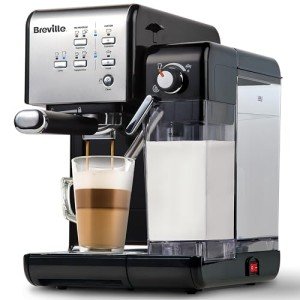Heat Exchange Espresso Machines: A Comprehensive Guide
Espresso machines have progressed substantially throughout the years, accommodating the needs of home baristas and coffee specialists alike. Amongst these machines, heat exchange espresso machines have gained appeal due to their capability to provide constant efficiency and remarkable brew quality. In this short article, we will check out the functions, benefits, and crucial features of heat exchange espresso machines, providing a detailed understanding for both potential buyers and coffee enthusiasts.
Understanding Heat Exchange Technology
Heat exchange espresso machines operate on an unique concept that allows simultaneous water heating for developing and steaming. They are equipped with a single boiler that makes use of a heat exchanger system. This feature is significant as it makes it possible for users to brew espresso while steaming milk concurrently, promoting effectiveness in the coffee-making process.
How Does a Heat Exchange Espresso Machine Work?
The process begins with the machine's water inlet filling the boiler. As the water warms up, it turns to steam. The innovative heat exchanger utilizes hot steam to heat additional water in a separate passage developed specifically for the brew group. This suggests that water can reach the ideal brewing temperature level without waiting on the boiler to adjust. The key steps consist of:
- Water Fill: Water is drawn into the boiler.
- Heating Process: The boiler warms up as water is transformed into steam.
- Heat Exchange: Steam warms water in the heat exchanger tube.
- Developing: Water from the heat exchanger is pressed through coffee grounds, extracting the flavors needed for a rich espresso.
This process permits quick temperature changes and improved coffee extraction.
Benefits of Heat Exchange Espresso Machines
Heat exchange espresso machines offer numerous advantages, especially for those aiming to maximize their coffee experience. Here are some crucial advantages:
- Simultaneous Brewing and Steaming: Users can brew espresso while steaming milk, making it ideal for busy cafes and home baristas who value efficiency.
- Temperature Stability: The boiler's steam pressure helps maintain a steady temperature level, which is crucial for constant espresso extraction.
- Versatility: The style permits quick switching between developing and steaming, making it much easier to produce different coffee beverages, from lattes to coffees.
- User-friendly: Models frequently include accessible controls, making it practical for both beginners and skilled baristas to produce quality beverages.
- Professional Quality: Heat exchange machines are often utilized in commercial settings, supplying users with high-quality developing efficiency in your home.
Key Features to Look for in Heat Exchange Espresso Machines
When thinking about the purchase of a heat exchange espresso machine, there are numerous functions that one need to consider:
- Build Quality: Look for machines made from resilient materials, such as stainless-steel or brass, making sure durability.
- Boiler Size: A larger boiler will hold more water and sustain greater output gradually.
- PID Temperature Control: This function assists keep consistent brew temperature levels, which can enhance the coffee-making procedure.
- Group Head Design: Machines with a saturated or semi-saturated group head provide better temperature stability.
- Reduce of Use: User-friendly interfaces and intuitive controls enhance the overall experience for baristas at all ability levels.
- Steam Wand Quality: An excellent steam wand with correct insulation and flexibility permits better texturing of milk.
- Water Reservoir Size: Depending on your needs, consider how typically you desire to refill the water reservoir.
Contrast of Popular Heat Exchange Espresso Machines
To better comprehend the choices available in the market, listed below is a contrast table of some popular heat exchange espresso machines:
| Machine Model | Boiler Size | PID Control | Cost Range | User Ratings |
|---|---|---|---|---|
| Profitec Pro 700 | 2.0 L | Yes | ₤ 2,000-₤ 2,500 | 9.5/ 10 |
| Rocket Espresso R58 | 1.8 L | Yes | ₤ 2,400-₤ 2,800 | 9.4/ 10 |
| Elekta Bianca | 1.8 L | Yes | ₤ 2,500-₤ 3,000 | 9.6/ 10 |
| La Spaziale S1 Vivaldi II | 1.5 L | Yes | ₤ 1,800-₤ 2,200 | 9.2/ 10 |
| Bezzera Magica | 1.2 L | No | ₤ 1,600-₤ 1,800 | 9.0/ 10 |
FAQs About Heat Exchange Espresso Machines
What is the primary distinction between a heat exchange and a dual boiler espresso machine?
While both types can brew espresso and steam milk at the exact same time, dual boiler machines have separate boilers for brewing and steaming. On the other hand, heat exchange machines utilize a single boiler and a heat exchanger to achieve the exact same function.
Are heat exchange machines ideal for newbies?
Yes! Numerous heat exchange machines are created with user-friendly functions, making them available for newbies. With proper guidance and practice, users can quickly produce quality espresso.
What sort of maintenance do heat exchange espresso machines need?
Regular maintenance includes descaling, cleaning up the boiler, checking seals and gaskets, and keeping the group head tidy. High-Quality Espresso Machines makes sure durability and constant efficiency.
Can I use a heat exchange machine for different kinds of coffee beverages?
Definitely! Discounted Espresso Machines permit users to develop a range of coffee drinks, including espresso, lattes, cappuccinos, and more.
Heat exchange espresso machines represent a blend of innovation and tradition, offering coffee lovers with the tools required for crafting the perfect cup. Their ability to concurrently brew and steam, integrated with exact temperature level control, makes them an engaging option for both home baristas and experts. With the ideal understanding on functions and upkeep, users can unlock a world of exquisite coffee experiences, ensuring that each sip is as delightful as the last.

